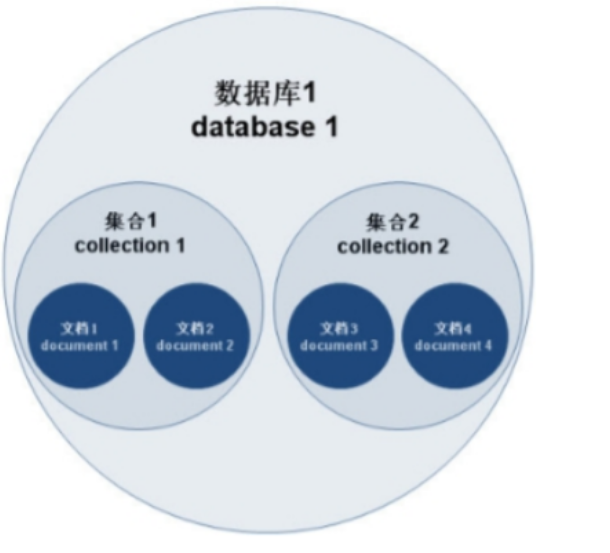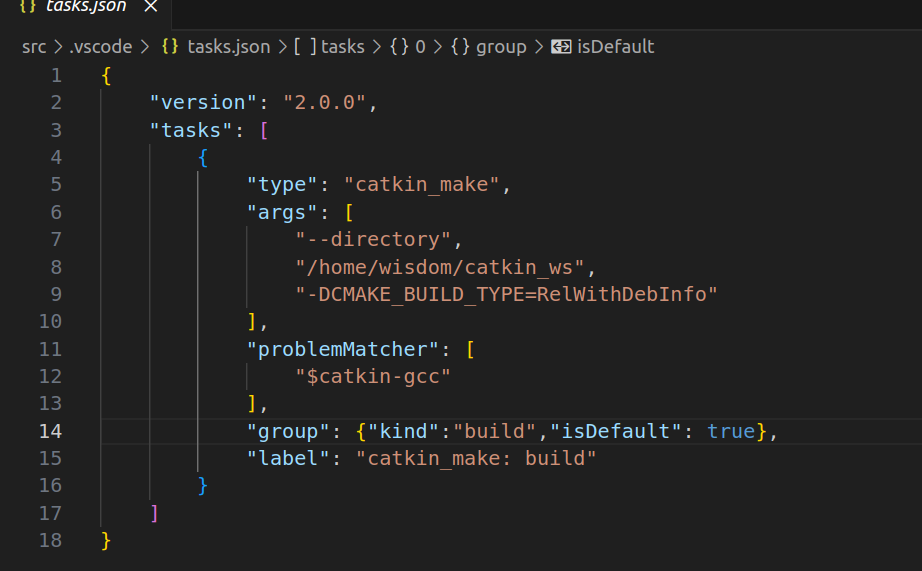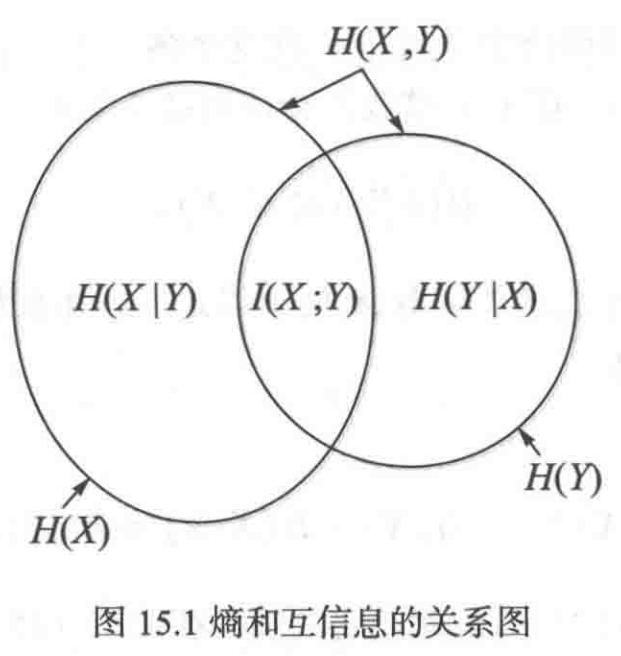Springboot IOC DI理解及实现+JUnit的引入+参数配置
一、JavaConfig
我们通常使用 Spring 都会使用 XML 配置,随着功能以及业务逻辑的日益复杂,应用伴随着大量的 XML 配置文件以及复杂的 bean 依赖关系,使用起来很不方便。
在 Spring 3.0 开始,Spring 官方就已经开始推荐使用 Java 配置来代替传统的 XML 配置了,它允许开发者将 bean 的定义和 Spring 的配置编写到到 Java 类中,不过似乎在国内并未推广盛行。当 Spring Boot 来临,人们才慢慢认识到 Java 配置的优雅,但是,也仍然允许使用经典的 XML 方式来定义 bean 和 配置 Spring。其有以下优势:
-
面向对象的配置。由于配置被定义为 JavaConfig 中的类,因此用户可以充分使用 Java 中的面向对象功能。一个配置类可以继承另一个,重写它的 @Bean 方法等。
-
减少或者消除 XML 配置。提供了一种纯 Java 的方式来配置与 XML 配置概念相似的 Spring 容器。
-
类型安全和重构友好。提供了一种类型安全的方法了来配置 Spring 容器,由于 Java 5 对泛型的支持,现在可以按类型而不是名称检索 bean,不需要任何的强制转换或者基于字符串的查找。
进行下面学习先搭建一个基于 Maven 构建的项目 java-config-demo,添加如下依赖:
<dependency><groupId>org.springframework</groupId><artifactId>spring-context</artifactId><version>5.0.8.RELEASE</version> </dependency>
1、XML 方式配置 IoC
1.1、定义两个 Bean
public class SomeBean {private OtherBean otherBean;
public void setOtherBean(OtherBean otherBean) {this.otherBean = otherBean;}public SomeBean() {System.out.println("SomeBean 被创建");}public void init() {System.out.println("SomeBean 被初始化");}public void destroy() {System.out.println("SomeBean 被销毁");}// 省略 toString 方法
}
public class OtherBean { public OtherBean() {System.out.println("OtherBean 被创建");}
}
1.2、编写配置
在 XML 配置文件中去配置这些 Bean 交给 Spring 管理。
<!-- applicationContext.xml --> <bean id="someBean" class="cn.bean.SomeBean"/>
1.3、启动 Spring
启动 Spring 读取该 XML 文件创建容器对象,从容器中获取 SomeBean 对象。
public class IoCTest {@Testpublic void testXmlConfig() {ApplicationContext ctx = new ClassPathXmlApplicationContexnt("classpath:applicationContext.xml");SomeBean someBean = ctx.getBean(SomeBean.class);System.out.println(someBean);}
}
2、JavaConfig 方式配置 IoC
JavaConfig 方式中使用注解彻底的替代 XML 文件,那么到底要怎么告诉 Spring 容器,bean 没有定义在 XML 文件中,而是定义在一个 Java 配置类中。
-
@Configuration:在类上贴该注解表示该类是 Spring 的配置类,具有 applicationContext.xml 文件的作用。 -
@Bean:在 Spring 的配置类的方法上贴该注解后,该方法返回的对象会交给 Spring 容器管理,替代 applicationContext.xml 中的 bean 标签。 -
@ComponentScan:在 Spring 配置类上贴该注解表示开启组件扫描器,默认扫描当前配置类所在的包,也可以自己指定,替代 XML 配置中的<context:component-scan />标签。 -
AnnotationConfigApplicationContext:该类是 ApplicationContext 接口的实现类,该对象是基于 JavaConfig 的方式来运作的 Spring 容器。
2.1、定义一个配置类
替代之前的 XML 文件,类中定义方法,返回 bean 对象交给 Spring 管理。
/**
* @Configuration
* 贴有该注解的类表示 Spring 的配置类
* 用于替代传统的 applicationContext.xml
*/
@Configuration
public class JavaConfig { /*** @Bean* 该注解贴在配置类的方法上,该方法会被 Spring 容器自动调用* 并且返回的对象交给 Spring 管理* 相当于 <bean id="someBean" class="cn.bean.SomeBean"/>*/@Beanpublic SomeBean someBean() {return new SomeBean();}
}
2.2、启动 Spring
加载配置类,启动 AnnotationConfigApplicationContext 容器对象,测试效果。
public class IoCTest {@Testpublic void testJavaConfig() {// 加载配置类,创建 Spring 容器ApplicationContext ctx = new AnnotationConfigApplicationContext(JavaConfig.class);// 从容器中取出 SomeBean 对象SomeBean someBean = ctx.getBean(SomeBean.class);System.out.println(someBean);}
}
2.3、@Bean 注解中的属性
在 XML 配置 bean 的方式中,我们可以在 bean 标签中的 id,name,init-method,destroy-method,scope 等属性来完成对应的配置,在使用 JavaConfig 方式中我们也一样能通过相应的配置来完成同样的效果,这些效果大多封装到 @Bean 注解的属性中。@Bean 注解中的属性有以下:
-
name:对应 bean 标签中的 name 属性,用于给 bean 取别名;
-
initMethod:对应 bean 标签中的 init-method 属性,配置 bean 的初始化方法;
-
destroyMethod:对应 bean 标签中的 destroy-method 属性,配置 bean 的销毁方法。
注意:在配置类的方式中有许多的默认规定,比如:
-
bean 的 id 就是当前方法名;
-
配置多例则是在方法上添加
@Scope("prototype")注解来实现,一般不用配,默认单例即可。
3、XML 方式配置 DI
<bean id="someBean" class="cn.bean.someBean"><property name="otherBean" ref="otherBean"/> </bean> <bean id="otherBean" class="cn.bean.OtherBean"/>
4、JavaConfig 方式配置 DI
在配置类方式中我们有两种方式可以完成依赖注入,无论是哪种方式,前提都是要先把 bean 交给 Spring 管理,然后在把 bean 注入过去后再使用 setter 方法设置关系。通用步骤:先把两个 bean 交给 Spring 管理。
@Bean
public SomeBean someBean() {SomeBean someBean = new SomeBean();return someBean;
}
@Bean
public OtherBean otherBean() {return new OtherBean();
}
4.1、通过方法形参注入
把需要注入的 bean 对象作为参数传入到另一个 bean 的方法声明中,形参名称最好跟 bean 的 id 一致。在容器里面有的 bean,都可以用这种方式注入。
// 在声明 SomeBean 的方法形参中直接注入 OtherBean 对象
@Bean
public SomeBean someBean(OtherBean otherBean) {SomeBean someBean = new SomeBean();someBean.setOtherBean(otherBean);return someBean;
}
4.2、调用方法注入
// 调用上面已经声明的 otherBean 方法
@Bean
public SomeBean someBean() {SomeBean someBean = new SomeBean();someBean.setOtherBean(otherBean());return someBean;
}
原理:Spring 容器在调用实例方法时,根据方法返回对象类型,判断容器中是否已经存在该类型的实例对象,如果不存在则执行实例方法,将返回对象实例交给容器管理,如果该实例已经存在了,直接从容器中拿已经存在实例对象方法,不执行实例方法。
5、使用 IoC DI 注解简化配置
以上案例中,在配置类内部去定义方法返回 bean 对象交给 Spring 管理的方式存在一个问题,就是如果需要创建的 bean 很多的话,那么就需要定义很多的方法,会导致配置类比较累赘,使用起来不方便。以前可以通过注解简化 XML 配置,现在同样也可以通过注解简化 JavaConfig,这里需要使用到 @ComponentScan 注解,等价于之前 XML 配置的 <context:component-scan base-package="贴了 IoC DI 注解的类所在的包"/>。
@ToString
@Component
public class SomeBean {private OtherBean otherBean;
@AutoWiredpublic void setOtherBean(OtherBean otherBean) {this.otherBean = otherBean;}public SomeBean() {System.out.println("SomeBean 被创建");}public void init() {System.out.println("SomeBean 被初始化");}public void destroy() {System.out.println("SomeBean 被销毁");}
}
@Component
public class OtherBean { public OtherBean() {System.out.println("OtherBean 被创建");}
}
<!-- applicationContext.xml --> <context:component-scan base-package="cn.bean"/>
@Configuration // 表示该类是 Spring 的配置类
@ComponentScan // 开启组件扫描器,默认扫描当前类所在的包,及其子包
public class JavaConfig { }
若需要扫描的包不是配置类所在的包时,我们可以通过注解中的 value 属性来修改扫描的包。
注意:组件扫描的方式只能扫描我们自己写的组件,若某个 bean 不是我们写的,则还是要通过在配置类中定义方法来处理,两者是可以同时存在的。
6、Spring Test 方式加载配置类
首先在 pom.xml 添加如下依赖:
<dependency><groupId>org.springframework</groupId><artifactId>spring-test</artifactId><version>5.0.8.RELEASE</version><scope>test</scope> </dependency> <dependency><groupId>junit</groupId><artifactId>junit</artifactId><version>4.12</version><scope>test</scope> </dependency> <dependency><groupId>org.junit.jupiter</groupId><artifactId>junit-jupiter-api</artifactId><version>5.6.3</version><scope>test</scope> </dependency>
6.1、JUnit4 的方式
6.1.1、基于 XML
@RunWith(SpringJUnit4ClassRunner.class)
@ContextConfiguration("classpath:XML文件路径")
public class IoCTest { @Autowiredprivate SomeBean someBean;@Testpublic void test() {System.out.println(someBean);}
}
6.1.2、基于配置类
@ContextConfiguration 注解不仅支持 XML 方式启动 Spring 测试,也支持配置类的方式,配置 classes 属性来指定哪些类是配置类即可。
@RunWith(SpringJUnit4ClassRunner.class)
@ContextConfiguration(classes={配置类1.class, 配置类2.class, ...})
public class IoCTest {@Autowiredprivate SomeBean someBean;
@Testpublic void test() {System.out.println(someBean);}
}
6.2、JUnit5 的方式
注意测试类和测试方法都不用 public 修饰,测试类只需要贴 @SpringJUnitConfig 指定加载的配置即可。
@SpringJUnitConfig(配置类.class)
class IoCTest {@Autowiredprivate SomeBean someBean;
@Testvoid test() {System.out.println(someBean);}
}
7、配置类的导入
在 Spring 项目中一般都会有多个 Spring 的配置文件,分别配置不同的组件,最后关联到主配置文件中,该功能也是同样可以在配置类的方式中使用的。
7.1、XML 方式
<!-- 例如 mvc.xml 中导入 applicationContext.xml --> <import resource="classpath:applicationContext.xml"/>
7.2、配置类方式
需要使用 @Import 来完成,指定导入的配置类。
// 主配置类
@Configuration
@Import(OtherJavaConfig.class) // 在主配置类中关联次配置类
public class JavaConfig { ... }// 次配置类
@Configuration
public class OtherJavaConfig { ... }// 测试
@SpringJUnitConfig(classes = JavaConfig.class) // 加载主配置类
public class IoCTest { ... }
7.3、配置类导入 XML 配置
需要使用 @ImportResource 来完成,指定导入 XML 配置文件的路径。
// 主配置类
@Configuration
@ImportResource("classpath:XML文件路径") // 在主配置类中关联 XML 配置
public class JavaConfig { ... }// 测试
@SpringJUnitConfig(classes = JavaConfig.class) // 加载主配置类
public class IoCTest { ... }
二、Spring Boot 介绍
Spring Boot 是由 Pivotal 团队提供的全新框架,其设计目的是用来简化新 Spring 应用的初始搭建以及开发过程。
人们把 Spring Boot 称为搭建程序的脚手架。其最主要作用就是帮我们快速的构建庞大的 Spring 项目,并且尽可能的减少一切 XML 配置,做到开箱即用,迅速上手,让我们关注与业务而非配置。
该框架非常火,目前新开项目几乎都是基于 Spring Boot 搭建,非常符合微服务架构要求,企业招聘大多都要求有 Spring Boot 开发经验,属于面试必问的点。
1、优点
-
创建独立运行的 Spring 应用程序;
-
可嵌入 Tomcat,无需部署 war 文件;
-
简化 Maven 配置;
-
自动配置 Spring;
-
提供生产就绪型功能,如:日志,健康检查和外部配置等;
-
不要求配置 XML;
-
非常容易和第三方框架集成起来。
2、缺点
-
版本更新较快,可能出现较大变化;
-
因为约定大于配置,所以经常会出现一些很难解决的问题。
三、Spring Boot 快速入门
1、使用 IDEA 创建 Spring Boot 工程
Spring Boot 建议使用官方提供的工具来快速构建项目。IDEA 自带该功能,但需要联网使用。
注意:官方提供的构建工具默认只能选择固定的版本,有些版本之间的差异非常大,所以如果需要选择某个版本可以自行在 pom.xml 文件中修改版本。
1.1、勾选依赖
1.2、编写 Controller 代码
@Controller
public class HelloController {@RequestMapping("/hello")@ResponseBodypublic String hello() {return "Hello Spring Boot";}
}
然后通过 main 方法启动程序,观察控制台输出内容,最后浏览器中输入 http://localhost:8080/hello 验证效果。
1.3、启动类和测试类
使用 IDEA 创建的项目会自动生成一个启动类,其实本质也是一个配置类,如下:
@SpringBootApplication
public class XxxApplication {public static void main(String[] args) {SpringApplication.run(XxxApplication.class, args);}
}
使用 IDEA 创建的项目会自动生成一个测试类,测试类贴有 @SpringBootTest 注解,可以通过通过注解属性指定加载的配置类,若没有指定,默认加载的是贴 @SpringBootApplication 注解的配置类,如下:
@SpringBootTest
class XxxApplicationTest {// ...
}
2、创建普通 Maven 工程
2.1、添加依赖
<!-- 打包方式 jar --> <packaging>jar</packaging> <parent><groupId>org.springframework.boot</groupId><artifactId>spring-boot-starter-parent</artifactId><version>2.3.3.RELEASE</version> </parent> <dependencies><dependency><groupId>org.springframework.boot</groupId><artifactId>spring-boot-starter-web</artifactId></dependency> </dependencies>
2.2、编写 Controller 代码
@Controller
public class HelloController {@RequestMapping("/hello")@ResponseBodypublic String hello() {return "Hello Spring Boot";}
}
2.3、编写启动程序
@SpringBootApplication
public class DemoApplication {public static void main(String[] args) {SpringApplication.run(DemoApplication.class, args);}
}
然后通过 main 方法启动程序,观察控制台输出内容,最后浏览器中输入 http://localhost:8080/hello 验证效果。
3、疑问
-
当前项目继承的 spring-boot-starter-parent 项目有什么用?
-
导入的依赖 spring-boot-starter-web 有什么用?
-
占用 8080 端口的 Tomcat9 服务器哪来的?
-
之前的 Web 应用打包是 war,为什么现在的打包方式是 jar?
-
@SpringBootApplication 注解有什么用?
-
main 方法中执行的代码 SpringApplication.run(..) 有什么用?
四、入门案例分析
1、spring-boot-starter-parent
Spring Boot 提供了一个名为 spring-boot-starter-parent 的工程,里面已经对各种常用依赖(并非全部)的版本进行了管理,我们的项目需要以这个项目为父工程,这样我们就不用操心依赖的版本问题了,需要什么依赖,直接引入坐标即可!
<parent><groupId>org.springframework.boot</groupId><artifactId>spring-boot-starter-parent</artifactId><version>2.3.3.RELEASE</version> </parent>
继承是 Maven 中很强大的一种功能,继承可以使得子 pom 可以获得 parent 中的部分配置(groupId,version,dependencies,build,dependencyManagement 等),可以对子 pom 进行统一的配置和依赖管理。
-
parent 项目中的 dependencyManagement 里的声明的依赖,只具有声明的作用,并不实现引入,因此子项目需要显式的声明需要用的依赖。如果不在子项目中声明依赖,是不会从父项目中继承下来的;只有在子项目中写了该依赖项,并且没有指定具体版本,才会从父项目中继承该项,并且 version 和 scope 都读取自父 pom;另外若子项目中指定了版本号,那么会使用子项目中指定的 jar 版本。
-
parent 项目中的 dependencies 里声明的依赖会被所有的子项目继承。
2、Spring Boot Starter
Spring Boot 非常优秀的地方在于提供了非常多以 spring-boot-starter-* 开头的开箱即用的 starter 启动器(依赖包),使得我们在开发业务代码时能够非常方便的、不需要过多关注框架的配置,而只需要关注业务即可。
Spring Boot 在配置上相比 Spring 要简单许多,其核心在于 spring-boot-starter, 在使用 Spring Boot 来搭建一个项目时,只需要引入官方提供的 starter,就可以直接使用,免去了各种配置。
官方目前已提供的常见的 Starter 如下 :
spring-boot-starter:核心启动器,提供了自动配置,日志和 YAML 配置支持。
spring-boot-starter-aop:支持使用
Spring AOP和AspectJ进行切面编程。spring-boot-starter-freemarker:支持使用
FreeMarker视图构建 Web 应用。spring-boot-starter-test:支持使用
JUnit,测试Spring Boot应用。spring-boot-starter-web:支持使用
Spring MVC构建 Web 应用,包括RESTful应用,使用Tomcat作为默认的嵌入式容器。spring-boot-starter-actuator:支持使用 Spring Boot Actuator 提供生产级别的应用程序监控和管理功能。
spring-boot-starter-logging:提供了对日志的支持,默认使用 Logback。
有关 Spring Boot Starter 命名规范,所有官方发布的 Starter 都遵循以下命名模式:spring-boot-starter-*,其中 * 指特定的应用程序代号或名称。任何第三方提供的 Starter 都不能以 spring-boot 作为前缀,应该将应用程序代号或名称作为前缀,譬如 mybatis-spring-boot-starter。
3、Web 启动器
这是 SpringBoot 提供的 Web 启动器,是一个快速集成 Web 模块的工具包,包含 Spring MVC,Jackson 相关的依赖,以及嵌入了 Tomcat9 服务器,默认端口 8080。
<dependencies><dependency><groupId>org.springframework.boot</groupId><artifactId>spring-boot-starter-web</artifactId></dependency> </dependencies>
需要注意的是,我们并没有在这里指定版本信息。因为 Spring Boot 的父工程已经对版本进行了管理了。
这个时候,我们会发现项目中多出了大量的依赖:
这些都是 Spring Boot 根据 spring-boot-starter-web 这个依赖自动引入的,而且所有的版本都已经管理好,不会出现冲突。
4、打包独立运行
对于 Spring Boot 项目来说无论是普通应用还是 Web 应用,其打包方式都是 jar 即可,当然 Web 应用也能打 war 包,但是需要额外添加许多插件来运行,比较麻烦。
默认的 Maven 打包方式是不能正常的打包 Spring Boot 项目的,需要额外的引入打包插件,才能正常的对 Spring Boot 项目打包,以后只要拿到该 jar 包就能脱离 IDE 工具独立运行了。
<!-- pom.xml 中添加插件 --> <build><plugins><!-- Spring Boot 打包插件 --><plugin><groupId>org.springframework.boot</groupId><artifactId>spring-boot-maven-plugin</artifactId></plugin></plugins> </build>
-
使用 maven 的 package 命令进行打包;
-
使用命令
java -jar xxx.jar运行 jar 包(--server.port=80)。
五、Spring Boot 参数配置
1、参数来源
-
命令行启动项目时传入的参数,如:
java -jar xxx.jar --server.port=80; -
application.properties 或者 application.yml 文件。
一般用的比较多的就是直接在 application.properties 或者 application.yml 配置,其次是命令行启动方式。
1.1、application.properties 语法
server.port=80 server.session-timeout=30 server.tomcat.uri-encoding=UTF-8spring.datasource.driverClassName=com.mysql.jdbc.Driver spring.datasource.url=jdbc:mysql://localhost:3306/rbac spring.datasource.username=root spring.datasource.password=admin
1.2、application.yml 语法
server: port: 80session-timeout: 30 tomcat.uri-encoding: UTF-8 spring: datasource: url: jdbc:mysql://localhost:3306/crm username: root password: admin driverClassName: com.mysql.jdbc.Driver
2、配置优先级
一个项目中可以有多个配置文件存放在不同目录中,此时他们会遵循固定的优先级来处理有冲突的属性配置,优先级由高到底,高优先级的配置会覆盖低优先级的配置。用 application.properties 文件举例子,下面文件优先级由高到低排序:
-
项目/config/application.properties
-
项目/application.properties
-
classpath:config/application.properties
-
classpath:application.properties
一般都在 classpath:application.properties 做配置,其他方式不使用。
3、参数属性绑定
通过配置参数,来自定义程序的运行。一般配置参数编写 application.properties 或者我们自定义的 properties 文件中。
3.1、参数配置在自定义的 properties
回顾之前使用 XML 配置时,想让 Spring 知道我们指定自定义的 properties 文件,就需要如下配置:
# db.properties jdbc.driverClassName=com.mysql.jdbc.Driver jdbc.url=jdbc:mysql://localhost:3306/rbac jdbc.username=root jdbc.password=admin
<context:property-placeholder location="classpath:db.properties" system-properties-mode="NEVER"/>
而现在使用 JavaConfig 配置,就得使用 @PropertySource + @Value 两个注解配合完成。@PropertySource 的作用就等价于上面那段 XML 配置。
/*** @PropertySource:把属性配置加载到 Spring 的环境对象中* @Value:从 Spring 环境对象中根据 key 读取 value*/
@Configuration
@PropertySource("classpath:db.properties")
public class JavaConfig {@Value("${jdbc.driverClassName}")private String driverClassName;@Value("${jdbc.url}")private String url;@Value("${jdbc.username}")private String username;@Value("${jdbc.password}")private String password;
@Beanpublic MyDataSource dataSource() {MyDataSource dataSource = new MyDataSource();dataSource.setDriverClassName(driverClassName);dataSource.setUrl(url);dataSource.setUsername(username);dataSource.setPassword(password);return dataSource;}
}
3.2、参数配置在 application.properties
准备好 application.properties 和一个类 MyDataSource,配置如下:
# application.properties jdbc.driverClassName=com.mysql.jdbc.Driver jdbc.url=jdbc:mysql://localhost:3306/crm jdbc.username=root jdbc.password=admin
public class MyDataSource {private String driverClassName;private String url;private String username;private String password;// 省略 toString 方法
}
3.2.1、@Value 绑定单个属性
在自定义的类上绑定属性如下:
@Component
public class MyDataSource {@Value("${jdbc.driverClassName}")private String driverClassName;@Value("${jdbc.url}")private String url;@Value("${jdbc.username}")private String username;@Value("${jdbc.password}")private String password;
// 省略 toString 方法
}
@Configuration
@ComponentScan("上面类所在的包路径")
public class JavaConfig { }
在配置类上绑定属性如下:
@Configuration
public class JavaConfig { // @Value:从 Spring 环境对象中根据 key 读取 value@Value("${jdbc.driverClassName}")private String driverClassName;@Value("${jdbc.url}")private String url;@Value("${jdbc.username}")private String username;@Value("${jdbc.password}")private String password;@Beanpublic MyDataSource dataSource() {MyDataSource dataSource = new MyDataSource();dataSource.setDriverClassName(driverClassName);dataSource.setUrl(url);dataSource.setUsername(username);dataSource.setPassword(password);return dataSource;}
}
3.2.2、@ConfigurationProperties 绑定对象属性
若觉得上面的方式比较笨重,可以把前缀编写到 @ConfigurationProperties 属性上,并且设置类属性与需要绑定的参数名相同,可实现自动绑定,但是注意,若是使用测试类加载贴有 @Configuration 的配置类,则需要在配置类中添加 @EnableConfigurationProperties 注解;若是使用测试类加载贴有 @SpringBootApplication 的配置类,则不需要。
@Component
@ToString
@Setter
@ConfigurationProperties(prefix="jdbc")
public class MyDataSource {private String driverClassName;private String url;private String username;private String password;
}
或者像下面这样配置:
@Bean
@ConfigurationProperties("jdbc")
public MyDataSource dataSource() {return new MyDataSource();
}
@EnableConfigurationProperties 文档中解释:当 @EnableConfigurationProperties 注解应用到你的 @Configuration 时,任何贴 @ConfigurationProperties 注解的 beans 将自动被 Environment 进行属性绑定。
3.3、使用 Spring 的 Environment 对象绑定属性
当要绑定的参数过多时,直接在配置类中注入 Spring 的 Environment 对象, 这样就不需要贴上在字段或者形参上太多的 @Value 注解,相对比较简洁。
从 Environment 对象中可以获取到 application.properties 里面的参数,也可以获取到 @PropertySource 中的参数(即对配置在什么文件中没有要求)。
@Configuration
@PropertySource("classpath:db.properties")
public class JavaConfig {/*** environment:表示 Spring 的环境对象,该对象包含了加载的属性数据* 可以获取到 application.properties 里面的参数,也可以获取到 @PropertySource 中的参数* 但 application.properties 的优先级比 @PropertySource 高*/@Autowiredprivate Environment environment;
@Beanpublic MyDataSource dataSource() {MyDataSource dataSource = new MyDataSource();dataSource.setDriverClassName(environment.getProperty("jdbc.driverClassName"));dataSource.setUrl(environment.getProperty("jdbc.url"));dataSource.setUsername(environment.getProperty("jdbc.username"));dataSource.setPassword(environment.getProperty("jdbc.password"));return dataSource;}
}
相关文章:

Springboot IOC DI理解及实现+JUnit的引入+参数配置
一、JavaConfig 我们通常使用 Spring 都会使用 XML 配置,随着功能以及业务逻辑的日益复杂,应用伴随着大量的 XML 配置文件以及复杂的 bean 依赖关系,使用起来很不方便。 在 Spring 3.0 开始,Spring 官方就已经开始推荐使用 Java…...

CeresPCL 最小二乘插值(曲线拟合)
一、简介 在多项式插值时,当数据点个数较多时,插值会导致多项式曲线阶数过高,带来不稳定因素。因此我们可以通过固定幂基函数的最高次数 m(m < n),来对我们要拟合的曲线进行降阶。之前的函数形式就可以变为: 既然是最小二乘问题,那么就仍然可以使用Ceres来进行求解。 …...

【TCP/IP】自定义应用层协议,常见端口号
互联网中,主流的是 TCP/IP 五层协议 5G/4G 上网,是有自己的协议栈,要比 TCP/IP 更复杂(能够把 TCP/IP 的一部分内容给包含进去了) 应用层 可以代表我们所编写的应用程序,只要应用程序里面用到了网络通信…...

Frida 的下载和安装
首先要安装好 python 环境 安装 frida 和 工具包 pip install frida frida-tools 查看版本: frida --version 16.4.8 然后到 github 上下载对应 server ( 和frida 的版本一致 16.4.8) Releases frida/frida (github.com) 查看手机或…...

后端开发刷题 | 链表内指定区间反转【链表篇】
描述 将一个节点数为 size 链表 m 位置到 n 位置之间的区间反转,要求时间复杂度 O(n)O(n),空间复杂度 O(1)O(1)。 例如: 给出的链表为 1→2→3→4→5→NULL1→2→3→4→5→NULL, m2,n4 返回 1→4→3→2→5→NULL 数据范围: 链表…...

【NVMe系列-提问页与文章总结页面】
NVMe系列-提问页与文章总结页面 问题汇总NVMe协议是什么?PRP 与 PRP List是做什么的? 已写文章汇总 问题汇总 NVMe协议是什么? PRP 与 PRP List是做什么的? 已写文章汇总...

用生成器函数生成表单各字段
生成器函数生成表单字段是非常合适的用法,避免你要用纯javascript做后台时频繁的制作表单,而不能重复利用 //这里是javascript部分,formfiled.js //生成器函数对字段的处理,让各字段name\className\label\value\placeholder赋值到input的属性…...

【xilinx】O-RAN 无线电接口 - Vivado 2020.1 及更新工具版本的发行说明
描述 记录包含 O-RAN 无线电接口 LogiCORE IP 的发行说明和已知问题,包括以下内容: 一般信息已知和已解决的问题 解决方案 一般信息 可以在以下三个位置找到支持的设备: O-RAN 无线电接口 IP 产品指南(需要访问O-RAN 安全站点&…...

结营考试- 算法进阶营地 - DAY11
结营考试 - 算法进阶营地 - DAY11 测评链接; A - 打卡题 考点:枚举; 分析 枚举 a _①_ b _②_ c d,中两个运算符的 3 3 3 种可能性,尝试寻找一种符合要求的答案。 参考代码 #include <bits/stdc.h> usi…...

设计模式: 访问者模式
文章目录 一、介绍二、模式结构三、优缺点1、优点2、缺点 四、应用场景 一、介绍 Visitor 模式(访问者模式)是一种行为设计模式,它允许在不修改对象结构的前提下,增加作用于一组对象上新的操作。就增加新的操作而言,V…...

selenium底层原理详解
目录 1、selenium版本的演变 1.1、Selenium 1.x(Selenium RC时代) 1.2、Selenium 2.x(WebDriver整合时代) 1.3、Selenium 3.x 2、selenium原理说明 3、源码说明 3.1、启动webdriver服务建立连接 3.2、发送操作 1、seleni…...

【Solidity】继承
继承 Solidity 中使用 is 关键字实现继承: contract Father {function getNumber() public pure returns (uint) {return 10;}function getNumber2() public pure virtual returns (uint) {return 20;} }contract Son is Father {}现在 Son 就可以调用 Father 的 …...

docker 安装mino服务,启动报错: Fatal glibc error: CPU does not support x86-64-v2
背景 docker 安装mino服务,启动报错: Fatal glibc error: CPU does not support x86-64-v2 原因 Docker 镜像中的 glibc 版本要求 CPU 支持 x86-64-v2 指令集,而你的硬件不支持。 解决办法 降低minio对应的镜像版本 经过验证:qu…...

地图相册系统的设计与实现
摘 要 随着信息技术和网络技术的飞速发展,人类已进入全新信息化时代,传统管理技术已无法高效,便捷地管理信息。为了迎合时代需求,优化管理效率,各种各样的管理系统应运而生,各行各业相继进入信息管理时代&a…...

使用vh和rem实现元素响应式布局
示例代码 height: calc(100vh 30rem) vh(Viewport Height):vh是一个相对单位,代表浏览器窗口高度的百分比,例如20vh就是浏览器窗口高度的20%。 rem(root em):rem是通过html根元素…...
)
螺旋矩阵 II(LeetCode)
题目 给你一个正整数 n ,生成一个包含 1 到 n2 所有元素,且元素按顺时针顺序螺旋排列的 n x n 正方形矩阵 matrix 。 解题 def generateMatrix(n):matrix [[0] * n for _ in range(n)]top, bottom 0, n - 1left, right 0, n - 1num 1while top <…...

如何快速掌握一款MCU
了解MCU特点 rom ,ramgpiotimerpower 明确哪些资源是项目开发需要的 认真理解相关资料模块 开始编程 编写特别的验证程序(项目不紧)按照自己的理解编写(老司机,时间紧张) 掌握MCU基本功能 定时器 固…...

XSS-DOM
文章目录 源码SVG标签Dom-Clobbringtostring 源码 <script>const data decodeURIComponent(location.hash.substr(1));;const root document.createElement(div);root.innerHTML data;// 这里模拟了XSS过滤的过程,方法是移除所有属性,sanitize…...

uniapp去掉页面导航条
在pages.json文件中,globalStyle中添加 ”app-plus“:{"titleNView":false }...

MySQL数据库专栏(三)数据库服务维护操作
1、界面维护,打开服务窗口找到MySQL服务,右键单击可对服务进行启动、停止、重启等操作。 选择属性,还可以设置启动类型为自动、手动、禁用。 2、指令维护 卸载服务:sc delete [服务名称] 例如:sc delete MySQL 启动服…...

DeepSeek 赋能智慧能源:微电网优化调度的智能革新路径
目录 一、智慧能源微电网优化调度概述1.1 智慧能源微电网概念1.2 优化调度的重要性1.3 目前面临的挑战 二、DeepSeek 技术探秘2.1 DeepSeek 技术原理2.2 DeepSeek 独特优势2.3 DeepSeek 在 AI 领域地位 三、DeepSeek 在微电网优化调度中的应用剖析3.1 数据处理与分析3.2 预测与…...

MongoDB学习和应用(高效的非关系型数据库)
一丶 MongoDB简介 对于社交类软件的功能,我们需要对它的功能特点进行分析: 数据量会随着用户数增大而增大读多写少价值较低非好友看不到其动态信息地理位置的查询… 针对以上特点进行分析各大存储工具: mysql:关系型数据库&am…...

DAY 47
三、通道注意力 3.1 通道注意力的定义 # 新增:通道注意力模块(SE模块) class ChannelAttention(nn.Module):"""通道注意力模块(Squeeze-and-Excitation)"""def __init__(self, in_channels, reduction_rat…...

大数据零基础学习day1之环境准备和大数据初步理解
学习大数据会使用到多台Linux服务器。 一、环境准备 1、VMware 基于VMware构建Linux虚拟机 是大数据从业者或者IT从业者的必备技能之一也是成本低廉的方案 所以VMware虚拟机方案是必须要学习的。 (1)设置网关 打开VMware虚拟机,点击编辑…...

1.3 VSCode安装与环境配置
进入网址Visual Studio Code - Code Editing. Redefined下载.deb文件,然后打开终端,进入下载文件夹,键入命令 sudo dpkg -i code_1.100.3-1748872405_amd64.deb 在终端键入命令code即启动vscode 需要安装插件列表 1.Chinese简化 2.ros …...

《通信之道——从微积分到 5G》读书总结
第1章 绪 论 1.1 这是一本什么样的书 通信技术,说到底就是数学。 那些最基础、最本质的部分。 1.2 什么是通信 通信 发送方 接收方 承载信息的信号 解调出其中承载的信息 信息在发送方那里被加工成信号(调制) 把信息从信号中抽取出来&am…...

【算法训练营Day07】字符串part1
文章目录 反转字符串反转字符串II替换数字 反转字符串 题目链接:344. 反转字符串 双指针法,两个指针的元素直接调转即可 class Solution {public void reverseString(char[] s) {int head 0;int end s.length - 1;while(head < end) {char temp …...

Nginx server_name 配置说明
Nginx 是一个高性能的反向代理和负载均衡服务器,其核心配置之一是 server 块中的 server_name 指令。server_name 决定了 Nginx 如何根据客户端请求的 Host 头匹配对应的虚拟主机(Virtual Host)。 1. 简介 Nginx 使用 server_name 指令来确定…...
中的KV缓存压缩与动态稀疏注意力机制设计)
大语言模型(LLM)中的KV缓存压缩与动态稀疏注意力机制设计
随着大语言模型(LLM)参数规模的增长,推理阶段的内存占用和计算复杂度成为核心挑战。传统注意力机制的计算复杂度随序列长度呈二次方增长,而KV缓存的内存消耗可能高达数十GB(例如Llama2-7B处理100K token时需50GB内存&a…...

初学 pytest 记录
安装 pip install pytest用例可以是函数也可以是类中的方法 def test_func():print()class TestAdd: # def __init__(self): 在 pytest 中不可以使用__init__方法 # self.cc 12345 pytest.mark.api def test_str(self):res add(1, 2)assert res 12def test_int(self):r…...
